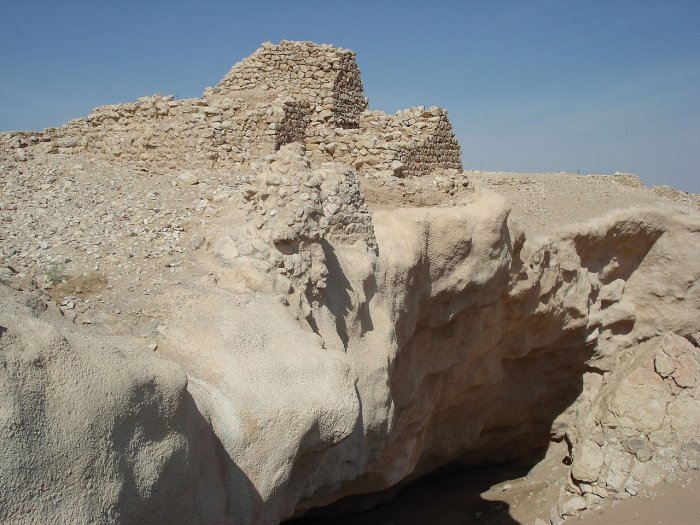Quest For Atlantis Of The Sands – Iram Of The Pillars – A Legendary Lost City
A. Sutherland - AncientPages.com - Most people associate Atlantis with an underwater city or continent long gone.
However, Arabia has its legend of a lost city, the so-called "Atlantis of the Sands," which has been the source of debate among many historians, archaeologists, and explorers. The existence of this legendary place remains a controversial subject to this day.
Ubar's ruins - Image credit: 9591353082 - CC BY 2.5
Over the years, various names have been given to this lost city, the most common being Ubar, Wabar, and Iram of the Pillars. The archaeological site is dated to a time which would make it contemporary to when the people of Ad would have lived according to the evidence provided by Quran exegetes.
According to most legends and myths, the Atlantis of the Sands is located somewhere in the Rub' al Khali desert, also known as the Empty Quarter. It covers most of the southern third of the Arabian Peninsula, including most of Saudi Arabia and areas of Oman, the United Arab Emirates, and Yemen.
Several explorers have tried to determine the lost city's actual location. One of them was Bertram Thomas (1892-1950). One of his Bedouin escorts told him the story of a lost city whose wicked people had attracted the wrath of God and had been destroyed.
Thomas later related the story to T.E. Lawrence ("Lawrence of Arabia"), who regarded Ubar as the "Atlantis of the Sands." Lawrence became fascinated with the lost city of the sands and kept looking for it, but he never found it. He found no trace of a lost city in the sands. Since then, many other explorers have attempted to locate the city beneath the sand.
In 1992 The New York Times published an article announcing the Atlantis of the Sands had been discovered by a Los Angeles-based team of amateur and professional archaeologists.
"Using a combination of high-tech satellite imagery and old-fashioned literary detective work, they discovered the fortress city buried under the shifting sands of a section of Oman so barren that it is known as the Rub' al Khali or Empty Quarter.
A sketch showing what the city Iram of Pillars. Image source
Built 5,000 years ago, Ubar was a processing and shipping center for frankincense, an aromatic resin that grew in the nearby Qara Mountains. It was used in cremations and religious ceremonies, as well as in perfumes and medicines; frankincense was as valuable as gold.
Ubar's rulers became wealthy and powerful, and its residents--according to Islamic legend--so wicked and debauched that eventually, God destroyed the city, allowing it to be swallowed up by the wild desert.
Lawrence, better known as Lawrence of Arabia, called it "the Atlantis of the sands" and, like the undersea Atlantis, many scholars doubted that Ubar ever existed," Los Angeles Times reports.
Researchers said they "documented how the city fell, and that it did not appear to be by divine retribution for wickedness. In building his "imitation of paradise," the legendary King Shaddad ibn 'Ad unknowingly constructed it over a large limestone cavern. Ultimately, the weight of the city caused the cavern to collapse into a massive sinkhole. It destroyed much of the town, causing the rest to be finally abandoned.
The researchers also discovered the remains of a nearby neolithic village that may date to at least 6000 B. C."
"The discoveries are expected to shed considerable light on the early history of the region, which has been shrouded in myth, said George Hedges, 39, a Los Angeles lawyer who, with 53-year-old filmmaker Nicholas Clapp was one of the leaders of the expedition. Among the region's mysteries, the findings may help resolve, for example, whether the Queen of Sheba, who would have been contemporaneous with Ubar, existed.
The researchers have already found evidence that the climate was much different then. The neolithic village was located on the banks of a river--long since dried up--and its residents farmed a substantial area.
Even in the time of Ubar, 3,000 years after the neolithic village, rainfall was more plentiful, and the well-supplied large quantities of water were enough to support not only the city but also the camel caravans that traversed the forbidding desert.
Clapp persuaded JPL scientists Charles Elachi and Ronald Blom to scan the region with a unique shuttle radar system flown on the Challenger's last successful mission. The radar could "see" through the overlying sand and loose soil to pick out subsurface geological features.
Using the imagery, the team picked out the ancient trade routes, which were packed down into hard surfaces by the passage of hundreds of thousands of camels. Junctions, where the trade routes converged or branched, seemed likely locations for the lost city.
Satellite photograph of South Arabia showing hypothetical locations of lost cities. Derivative work, credit: Shaibalahmar - Public Domain
Armed with this information, they enlisted archeologist Juris Zarins of Southwest Missouri State University and British explorer Sir Ranulf Fiennes, who had served with the British military in the deserts of Oman and fought with the sultan's forces.
The team made a brief, preliminary expedition to Oman last summer, searching about 35 sites. They found shards of pottery and other evidence of the trade routes, but nothing to show they had definitively found the city."
Still, many feel this intriguing question remains unanswered:
"Is the city of Ubar identical to Iram of the Pillars or is the legendary lost city still buried beneath the sand?"
Over the years, various names have been given to this lost city, the most common being Ubar, Wabar, and Iram of the Pillars. According to most legends and myths, the Atlantis of the Sands is located somewhere in the Rub' al Khali desert, also known as the Empty-quarter. This covers most of the southern third of the Arabian Peninsula, including most of Saudi Arabia and areas of Oman, the United Arab Emirates, and Yemen.
Several explorers have tried to determine the lost city's true location. One of them was Bertram Thomas (1892-1950). One of his Bedouin escorts told him the story of a lost city whose wicked people had attracted the wrath of God and had been destroyed.
He found no trace of a lost city in the sands. Thomas later related the story to T.E. Lawrence ("Lawrence of Arabia"), who regarded Ubar as the "Atlantis of the Sands". Lawrence became fascinated with the lost city of the sands and kept looking for it, but he never found it either. Since then many other explorers attempted to locate the city buried beneath the sand.
In 1992 The New York Times published an article announcing the Atlantis of the Sands has been discovered by a Los Angeles-based team of amateur and professional archaeologists.
"Using a combination of high-tech satellite imagery and old-fashioned literary detective work, they discovered the fortress city buried under the shifting sands of a section of Oman so barren that it is known as the Rub'al Khali or Empty Quarter. When they started digging at Shis'r, near an old Arab fort, they began to uncover a large ancient structure. No one was sure what it was..."
Some explorers theorized the remains of the old fort at Shisr could be the rests of the Iram of the Pillars.
Built nearly 5,000 years ago, Ubar was a processing and shipping center for frankincense, an aromatic resin has grown in the nearby Qara Mountains. It was used in cremations and religious ceremonies, as well as in perfumes and medicines, frankincense was as valuable as gold. Ubar's rulers became wealthy and powerful,
A legend says that the city's residents became ao wicked and debauched that God destroyed the city, allowing it to be swallowed up by the restless desert.
There is also another explanation. Researchers "documented how the city fell, and that it did not appear to be by divine retribution for wickedness. In building his "imitation of paradise," the legendary King Shaddad ibn 'Ad unknowingly constructed it over a large limestone cavern. Ultimately, the weight of the city caused the cavern to collapse in a massive sinkhole. Most of it was destroyed and the rest was abandoned.
Such discoveries possibly can shed some light on the early history of the region, which has been shrouded in myth, according to George Hedges, a Los Angeles lawyer who with 53-year-old filmmaker Nicholas Clapp was one of the leaders of the expedition. Among the mysteries of the region the findings may help resolve, for example, is whether the Queen of Sheba, who would have been contemporaneous with Ubar, really existed.
The researchers have already found evidence that the climate was much different at that time. The neolithic village was apparently located on the banks of a river--long since dried up--and its residents farmed a substantial area.
Even in the time of Ubar, 3,000 years after the neolithic village, rainfall was more plentiful and the well supplied quite large quantities of water, enough to support not only the city itself but also the camel caravans that traversed the forbidding desert.
Clapp persuaded JPL scientists Charles Elachi and Ronald Blom to scan the region with a special shuttle radar system that was flown on the last successful mission of Challenger. The radar was able to "see" through the overlying sand and loose soil to pick out subsurface geological features.
A brief, preliminary expedition to Oman did not find much, only shards of pottery fragments, and other evidence of the trade routes. but no traces of a legendary city.
"Is the city of Ubar identical to Iram of the Pillars or is the legendary lost city still buried somewhere beneath the sand?" Nobody knows.
Updated on July 26, 2022
Written by – A. Sutherland AncientPages.com Senior Staff Writer
Copyright © AncientPages.com All rights reserved. This material may not be published, broadcast, rewritten or redistributed in whole or part without the express written permission of AncientPages.com
Expand for referencesNicholas Clapp - The Road to Ubar: Finding the Atlantis of the Sands
Ranulph Fiennes - Atlantis of the Sands – The Search for the Lost City of Ubar
More From Ancient Pages
-
 Why Were Conch-Shell Trumpets So Important To The Ancient Chacoan Society?
Archaeology | May 7, 2024
Why Were Conch-Shell Trumpets So Important To The Ancient Chacoan Society?
Archaeology | May 7, 2024 -
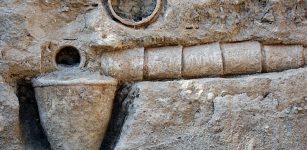 Ancient Aqueduct System Discovered In Boroujerd, Lorestan
News | Sep 16, 2015
Ancient Aqueduct System Discovered In Boroujerd, Lorestan
News | Sep 16, 2015 -
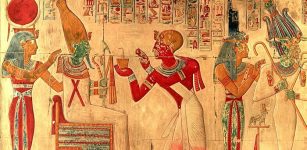 Osiris: Enigmatic And Powerful God In Ancient Egypt
Egyptian Mythology | Jun 13, 2017
Osiris: Enigmatic And Powerful God In Ancient Egypt
Egyptian Mythology | Jun 13, 2017 -
 Glastonbury Tor – One Of The Most Mysterious Sacred Places In England
Civilizations | Aug 30, 2018
Glastonbury Tor – One Of The Most Mysterious Sacred Places In England
Civilizations | Aug 30, 2018 -
 Ancient Mysteries In The Amazon Jungle – Strange White Men With Glowing Eyes – Part 1
Civilizations | May 28, 2018
Ancient Mysteries In The Amazon Jungle – Strange White Men With Glowing Eyes – Part 1
Civilizations | May 28, 2018 -
 The Lost Prophecy Reveals Chilling Future Events – The Last Words To Mankind?
Featured Stories | Jan 24, 2015
The Lost Prophecy Reveals Chilling Future Events – The Last Words To Mankind?
Featured Stories | Jan 24, 2015 -
 Tiny Tools And Skills Of Mysterious Toaleans People In Southernmost Sulawesi, Indonesia
Archaeology | May 27, 2021
Tiny Tools And Skills Of Mysterious Toaleans People In Southernmost Sulawesi, Indonesia
Archaeology | May 27, 2021 -
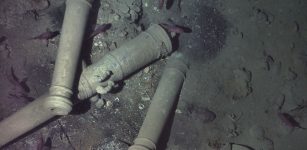 New Details On Discovery Of San Jose 300-Year-Old Shipwreck That Sank With Treasure Of Gold, Silver, And Emeralds
Archaeology | May 23, 2018
New Details On Discovery Of San Jose 300-Year-Old Shipwreck That Sank With Treasure Of Gold, Silver, And Emeralds
Archaeology | May 23, 2018 -
 Durendal – Magical Sword Of Knight Roland That Cut Stone Boulders With A Single Strike
Featured Stories | Jan 19, 2022
Durendal – Magical Sword Of Knight Roland That Cut Stone Boulders With A Single Strike
Featured Stories | Jan 19, 2022 -
 Nazar Amulet – Blue Color Wards Off The Evil Eye According To Ancient Belief
Ancient Symbols | Mar 13, 2018
Nazar Amulet – Blue Color Wards Off The Evil Eye According To Ancient Belief
Ancient Symbols | Mar 13, 2018 -
 Rare Viking Boat Burial At Kiloran Bay In Colonsay, Scotland Remains A Fascinating Find
Featured Stories | Mar 6, 2023
Rare Viking Boat Burial At Kiloran Bay In Colonsay, Scotland Remains A Fascinating Find
Featured Stories | Mar 6, 2023 -
 Unexplained Mystery Of A Painting That Has Been Labeled ‘Evil’
Featured Stories | Oct 3, 2018
Unexplained Mystery Of A Painting That Has Been Labeled ‘Evil’
Featured Stories | Oct 3, 2018 -
 Hopi’s Encounter With Maasaw – The Skeleton Man And His Gift Of Sacred Knowledge
Myths & Legends | May 5, 2017
Hopi’s Encounter With Maasaw – The Skeleton Man And His Gift Of Sacred Knowledge
Myths & Legends | May 5, 2017 -
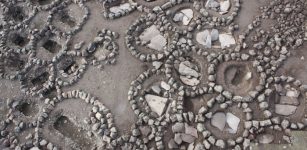 Vast Paleogenetic Study Reveals Insights On Migration, Farming And Language Development Across The Southern Arc
Archaeology | Aug 26, 2022
Vast Paleogenetic Study Reveals Insights On Migration, Farming And Language Development Across The Southern Arc
Archaeology | Aug 26, 2022 -
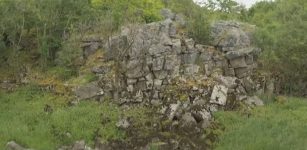 Unique Bronze Age Fortress Discovered In Galway, Ireland
Archaeology | Jun 25, 2022
Unique Bronze Age Fortress Discovered In Galway, Ireland
Archaeology | Jun 25, 2022 -
 Our Lives Have Always Been Manipulated By Money – Part 2
Featured Stories | Jun 4, 2022
Our Lives Have Always Been Manipulated By Money – Part 2
Featured Stories | Jun 4, 2022 -
 ‘Our Way Model’ Reveals How First Anatomically Modern Humans Populated Europe
Human Beginnings | Oct 7, 2024
‘Our Way Model’ Reveals How First Anatomically Modern Humans Populated Europe
Human Beginnings | Oct 7, 2024 -
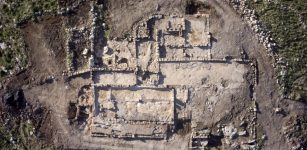 Impressive 2,700-Year-Old Farmhouse And 1,500-Year-Old Monastery Uncovered In Rosh Ha-‘Ayin
Archaeology | Dec 30, 2015
Impressive 2,700-Year-Old Farmhouse And 1,500-Year-Old Monastery Uncovered In Rosh Ha-‘Ayin
Archaeology | Dec 30, 2015 -
 ‘Viking Disease’ Hand Disorder May Come From Neanderthal Genes
Archaeology | Jun 14, 2023
‘Viking Disease’ Hand Disorder May Come From Neanderthal Genes
Archaeology | Jun 14, 2023 -
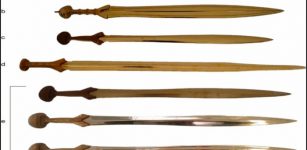 Bronze Age Swords Were Used By Skilled Fighters – New Study
Archaeology | Apr 29, 2020
Bronze Age Swords Were Used By Skilled Fighters – New Study
Archaeology | Apr 29, 2020

